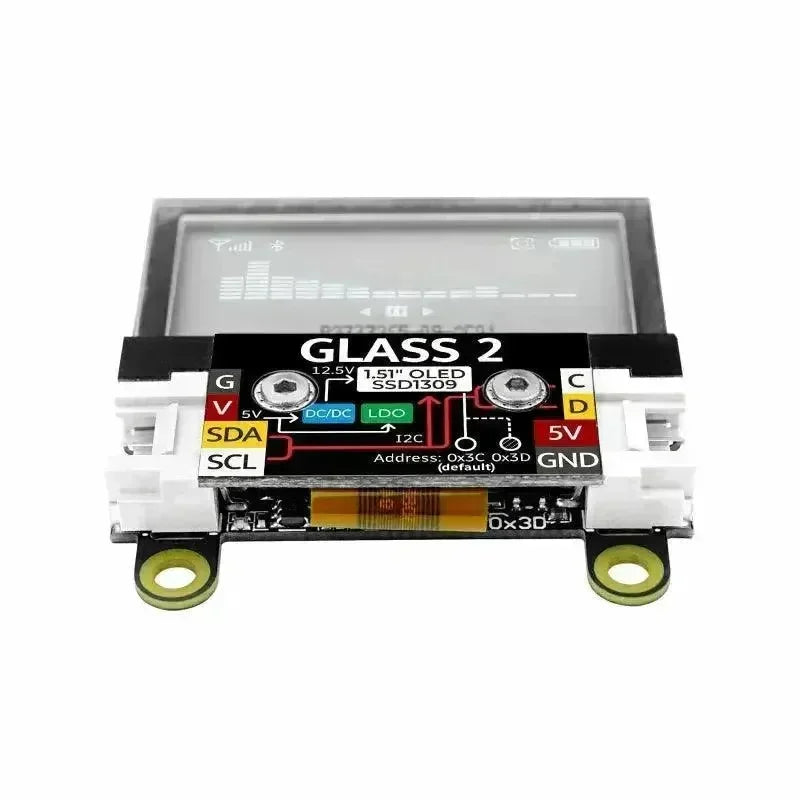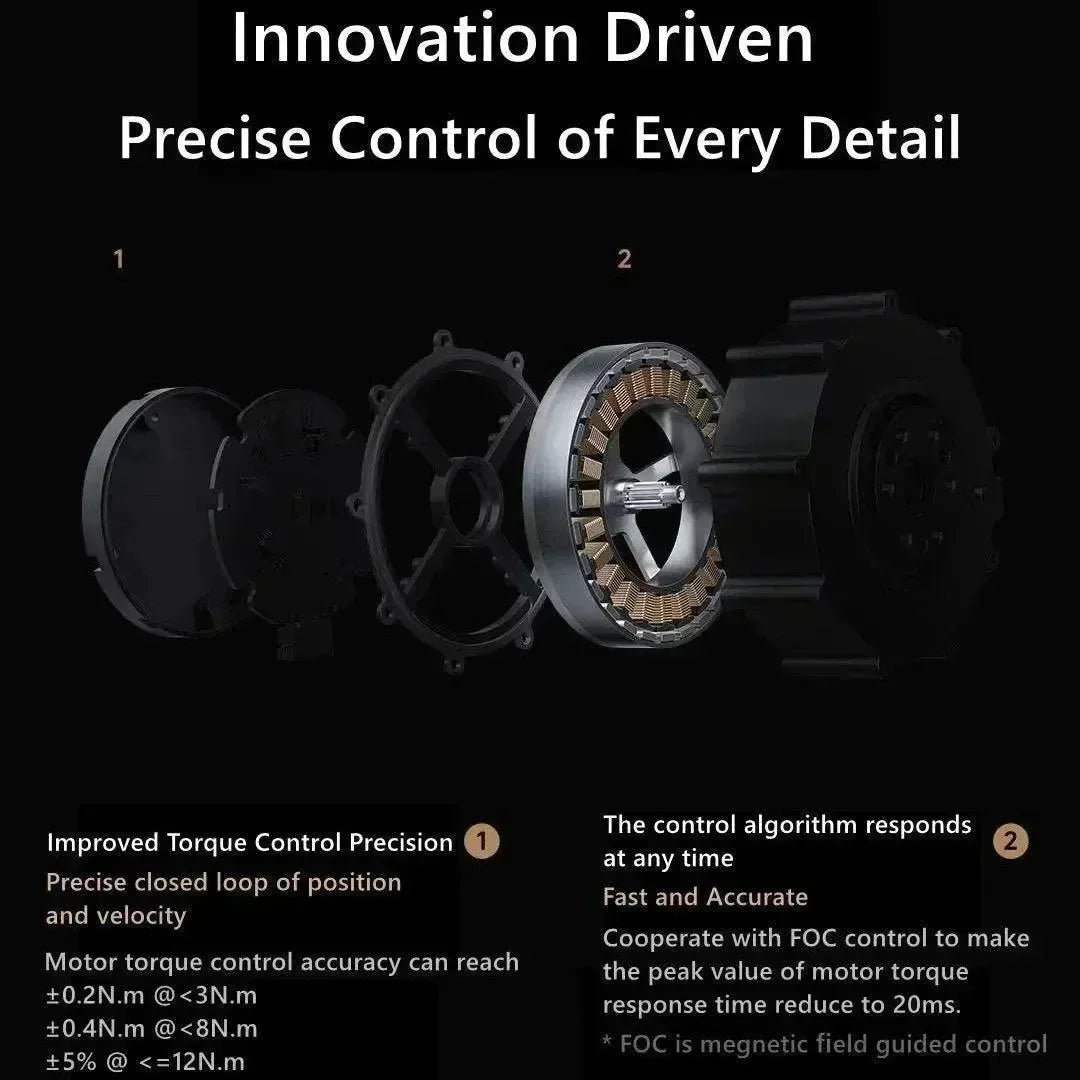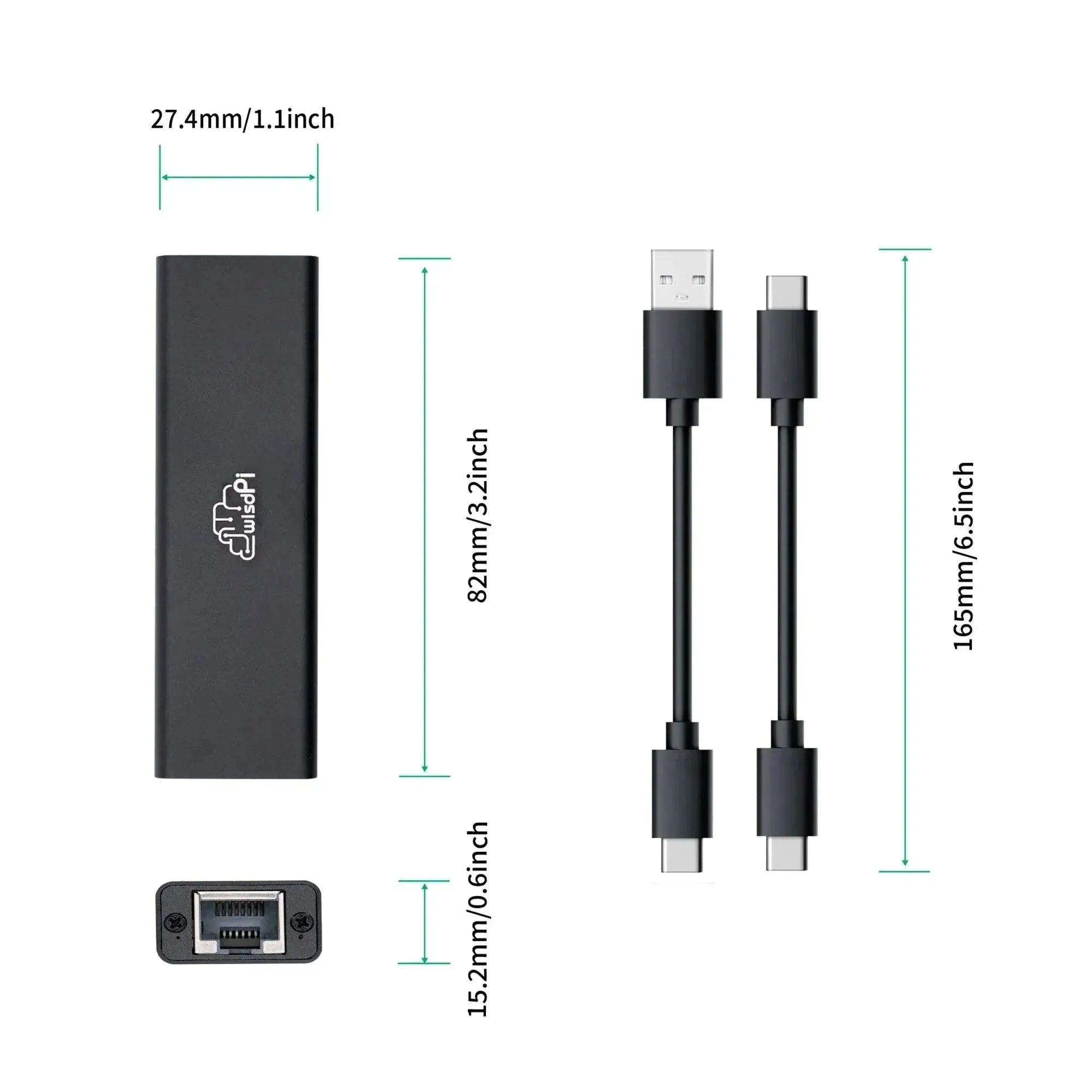Confronto delle Specifiche Tecniche
|
Parametro |
Unità di vetro |
Unità Glass2 |
|
Dimensione dello schermo |
1,51 pollici |
|
|
Risoluzione |
128 x 64 pixel |
|
|
Zona trasparente |
128 x 56 pixel |
Area completamente trasparente |
|
Soluzione del conducente |
STM32F030F4P6 + SSD1309 |
|
|
Interfaccia di controllo |
I2C (indirizzo predefinito 0x3C) |
I2C (indirizzo predefinito 0x3C, switchabile a 0x3D) |
|
Controllo della luminosità |
256 livelli |
|
|
Centralina |
MCU STM32 integrato, supporta controllo simultaneo di unità multiple tramite bus I2C |
Nessun MCU, richiede PaHUB espansione per controllare più unità |
|
Pulsanti e cicalino |
Include 2 pulsanti e un segnale acustico per interazione utente |
Nessun pulsante o campanello |
|
Rinfresca l'efficienza |
Relativamente basso, adatto per esposizioni statiche |
Alta efficienza di aggiornamento, ideale per dinamico e in rapida evoluzione mostra |
|
Controllo multi-unità |
Può controllare dozzine di unità tramite Autobus I2C |
Supporta fino a 2 unità su stessa bus I2C; per ulteriori, richiede PaHUB |
|
Angolo di visione |
Vista completa |
|
|
temperatura di esercizio |
0~40°C |
|
|
Tensione logica |
3,3 V |
|
|
Taglia del prodotto |
Dimensioni: 53 x 42 x 2,3 mm |
Dimensioni: 53 x 42 x 6 mm |
|
Dimensioni del pacchetto |
Dimensioni: 136 x 92 x 13 mm |
|
|
Peso del prodotto |
10 g |
9,1 grammi |
|
peso del pacco |
15,2 grammi |
13,9 g |
Confronto delle Caratteristiche Principali
Caratteristiche del Vetro Unità
-
MCU STM32 integrato: Il Unit Glass è dotato di un microcontrollore STM32, che consente il controllo diretto del display e facilita la comunicazione tramite il bus I2C. Questa architettura non solo consente aggiornamenti del firmware, ma permette anche la gestione di più unità tramite il bus I2C, migliorando così significativamente la sua espandibilità.
-
Supporto per l'interazione dell'utente: Il modulo è dotato di due pulsanti e un buzzer, facilitando capacità di interazione semplici, inclusi input da pulsante e feedback uditivo. Queste caratteristiche lo rendono adatto per varie applicazioni interattive.
-
Facilità di Utilizzo Integrato: L'area di visualizzazione semi-trasparente, che misura 128 x 56 pixel, può essere integrata senza soluzione di continuità con vari componenti hardware o ambienti. Questa caratteristica produce un effetto visivo distintivo che è spesso utilizzato nella tecnologia per la casa intelligente così come nei dispositivi integrati.
Caratteristiche di Unit Glass2
-
Alta Efficienza di Aggiornamento: La rimozione dell'MCU in Unit Glass2 consente di operare esclusivamente con il driver SSD1309. Questo approccio progettuale non solo riduce i costi, ma migliora significativamente l'efficienza di aggiornamento, rendendolo particolarmente adatto per applicazioni che coinvolgono contenuti dinamici o in rapida evoluzione.
-
Design Leggero: L'omissione di un'unità microcontrollore (MCU) nel modulo Glass2 contribuisce al suo ridotto peso e maggiore convenienza economica. Tuttavia, questa configurazione richiede l'uso di un controller esterno per facilitare funzionalità più complesse.
-
Commutazione dell'indirizzo I2C: Il dispositivo Glass2 consente agli utenti di cambiare gli indirizzi I2C utilizzando i pad di saldatura, specificamente 0x3C o 0x3D. È importante notare che il dispositivo è limitato a collegare un massimo di due schermi contemporaneamente su un singolo bus I2C. Per il collegamento di schermi aggiuntivi, è necessario un modulo di espansione PaHUB.

Scenari di applicazione raccomandati
Quando Scegliere il Vetro Unito
-
Dispositivi che Richiedono Interazione dell'Utente L'inclusione di pulsanti e di un buzzer lo rende ideale per dispositivi in cui gli utenti devono interagire tramite input dei pulsanti o feedback sonoro, come serrature intelligenti o terminali informativi.
-
Progetti con Display Multi-Schermo L'MCU integrato supporta il controllo simultaneo di più schermi, rendendolo adatto per configurazioni multi-schermo come cruscotti o pannelli informativi.
-
Integrazione Incorporata Necessaria Il design semi-trasparente consente un'integrazione senza soluzione di continuità con l'hardware, rendendolo ideale per display per smart home o sistemi di controllo incorporati.
Quando Scegliere il Vetro Unit2
-
Display Dinamico con Alte Frequenze di Aggiornamento Se il progetto richiede aggiornamenti rapidi o animazioni dinamiche (ad es., dashboard di dati in tempo reale o animazioni), Unit Glass2 è la scelta migliore.
-
Requisiti di Design Leggero Il design semplificato di Glass2 lo rende adatto per progetti con rigorose limitazioni di costo o complessità hardware.
-
Utilizzo Limitato su Più Schermi Per progetti che richiedono solo uno o due display, la funzione di commutazione dell'indirizzo I2C di Glass2 offre un supporto sufficiente senza hardware aggiuntivo.
Vantaggi e svantaggi
| Caratteristiche | Vantaggi del Vetro Unitario | Vantaggi del Vetrocamera2 |
| Capacità di controllo | Supporta più schermi, altamente espandibile | Commutazione semplice dell'indirizzo I2C per schermi singoli o doppi |
| Funzionalità interattive | Pulsanti e cicalino integrati per l'interazione dell'utente | Nessuna funzionalità interattiva, ma design più leggero |
| Rinfresca l'efficienza | Frequenza di aggiornamento standard per contenuti statici | Alta efficienza di aggiornamento per display dinamici |
| Costo | Costo relativamente più alto | Costo inferiore, ideale per progetti sensibili al budget |
| Complessità hardware | Il MCU integrato aggiunge complessità ma semplifica il deployment. | Hardware semplificato, richiede un controller esterno |
Conclusione e Guida alla Selezione
| Caso d'uso | Prodotto consigliato |
| Dispositivi che richiedono interazione (pulsanti, feedback sonoro) | Vetro unitario |
| Display multi-schermo con maggiore espandibilità | Vetro unitario |
| Display ad alta frequenza di aggiornamento (dati dinamici, animazioni) | Unità Vetro2 |
| Design leggeri con complessità hardware minima | Unità Vetro2 |
| Schermi singoli o doppi con una migliore efficienza dei costi | Unità Vetro2 |

























































































